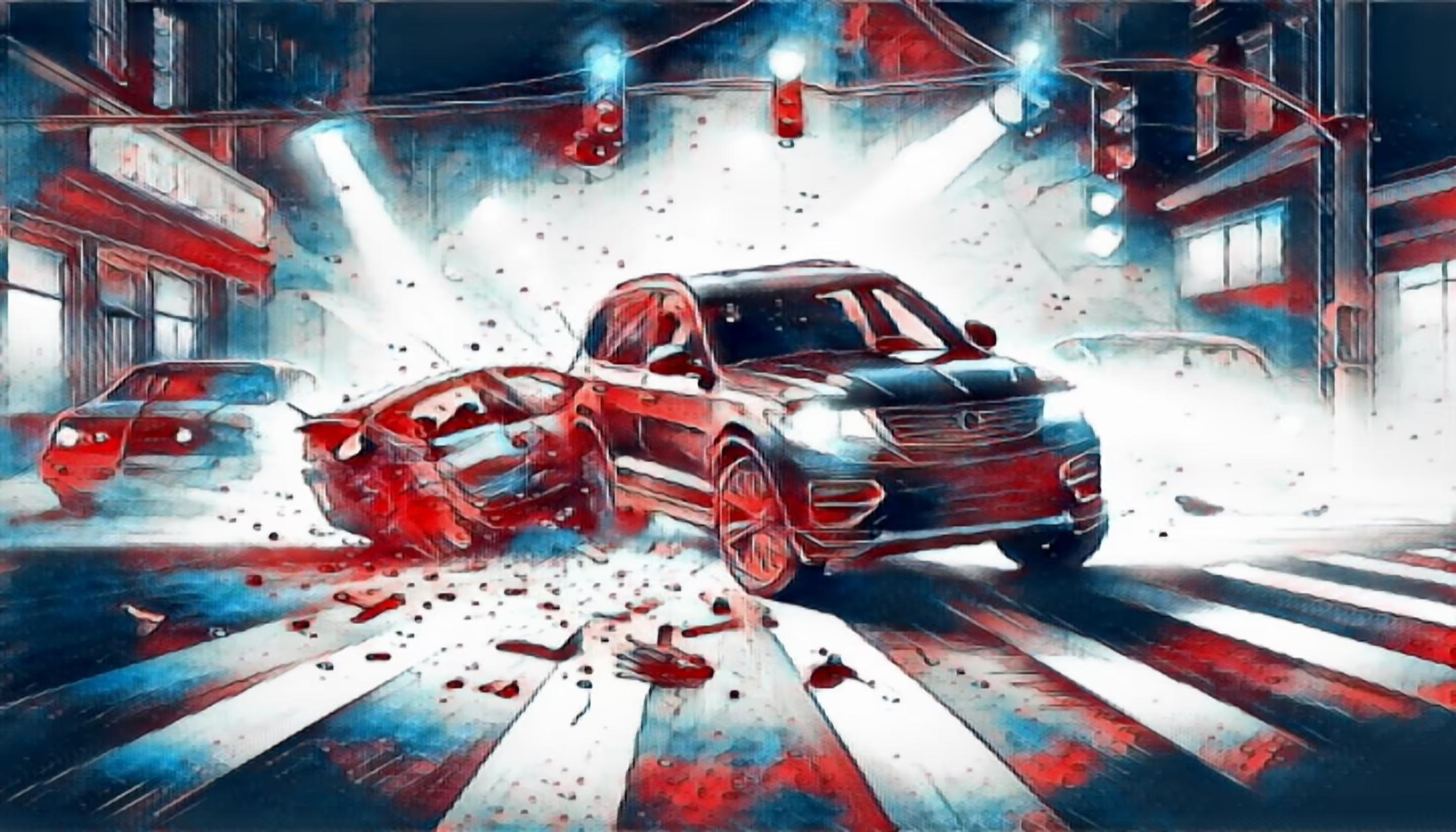Consider a hypothetical situation in which the plaintiff is stopped in the left-turn lane at a green light that is transitioning to red. The light turns red while waiting for traffic to clear, and the plaintiff continues with the turn, but a car passing the new green light collides with the plaintiff's vehicle.
The plaintiff will argue that they had the right of way to make a left turn under a changing light, and the defendant will argue that their light was green at the time of the collision.
In this case, the plaintiff and the defendant would both be found partially negligent, the defendant more so than the plaintiff because the plaintiff was in the intersection before the defendant had the right of way.
The plaintiff's weight of negligence is only in the gray area of speeding up to make the light or taking too long to clear the intersection; either way, the defendant should have seen the vehicle in the intersection before proceeding under a green light.
Who Is At Fault When A Car Turning Left Fails To Yield To A Speeding Vehicle?
Let's assume the defendant waits in the middle lane to turn left into a driveway. She makes a left turn but collides with a slightly speeding vehicle that cannot stop. In this scenario, we have a driver who failed to yield and another driver traveling at an unsafe speed before the collision.
In this situation, the speed of the driver traveling in their lane would not matter because the defendant failed to yield while making a left turn, violating California Vehicle Code 21801(a):
The driver of a vehicle intending to turn to the left or to complete a U-turn upon a highway, or to turn left into public or private property, or an alley, shall yield the right-of-way to all vehicles approaching from the opposite direction which are close enough to constitute a hazard at any time during the turning movement, and shall continue to yield the right-of-way to the approaching vehicles until the left turn or U-turn can be made with reasonable safety.
What Happens When An Accident Occurs As A Result Of Being Cut Off By A Party That Left The Scene?
Consider a hypothetical scenario where the defendant is cut off by a vehicle attempting to reach the left-turn-only lane. The defendant swerves to avoid hitting the car that cut them off but instead strikes a vehicle in the lane next to them. The third party makes the left turn and flees the scene. The plaintiff is hit due to evasive action taken during a sudden emergency.
In this case, the defendant would still be at fault because her evasive reaction caused the accident. Although they were unsafely cut off, the unsafe reaction wouldn't justify this collision.
What Happens When A Driver Making A Right Turn Is Hit By A Cyclist?
Let's assume a cyclist in an unmarked cycling lane strikes a vehicle that suddenly merges in front of them to take a sharp right turn. In this instance, the car driver would be at fault for unsafely changing lanes, violating California Vehicle Code 22017:
No person shall turn a vehicle from a direct course or move right or left upon a roadway until such movement can be made with reasonable safety and then only after the giving of an appropriate signal in the manner provided in this chapter in the event any other vehicle may be affected by the movement.
Although the bicyclist struck the vehicle first, the driver's negligence would have caused the collision.
